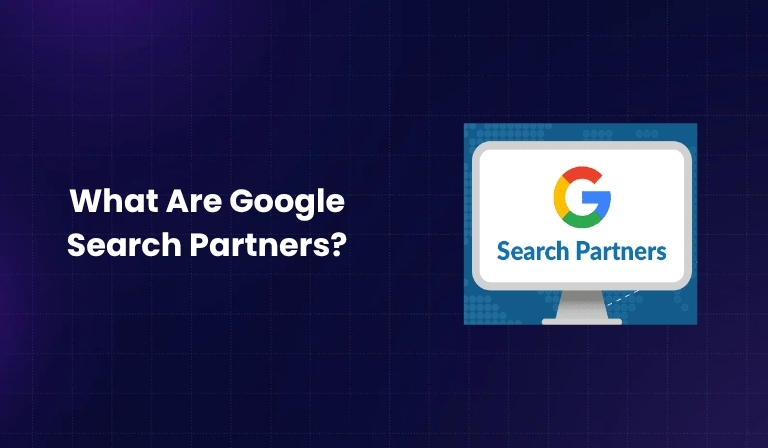Online advertising with Google Ads is one of the most effective ways to reach your audience. But did you know your ads can show up beyond just Google Search? That’s where Google Search Partners come in. In this guide, we’ll explore what they are, how they work, their pros and cons, and 7 actionable tips to get the most out of them.
What are Google Search Partners
Google Search Partners are third-party websites that team up with Google to show ads on their search results. These can include:
- Search sites like Ask.com
- Google-owned properties like YouTube Search and Google Maps
- Directory or content-based sites with built-in search engines
When you enable the “Include Google search partners” option in your campaign settings, your ads may appear on these platforms in addition to Google’s own search pages.
How Google Search Partners Work
The core idea is similar to how ads appear on Google Search:
- Users search using relevant keywords on a partner site
- Google runs an ad auction
- If your ad wins, it is displayed on that partner’s search results page
However, the key difference is that you don’t get to choose exactly where your ads appear within the Search Partner Network. Google uses its internal algorithms to place ads based on relevance and quality.
You’re only charged when someone clicks your ad—just like standard Google Search ads.
Benefits of Using Google Search Partners
Here are some key advantages of enabling Google Search Partners:
- Wider Reach: Access audiences beyond Google.com
- Lower CPC: Often, partner sites have lower competition, leading to cheaper clicks
- Audience Diversification: Reach users in different contexts and platforms
- More Data: Test new campaigns and gather insights
Drawbacks of Google Search Partners
Despite the benefits, there are a few limitations to consider:
- Lower CTR: Partner sites may deliver less targeted traffic, lowering clickthrough rates
- Less Transparency: You won’t know which exact partner sites your ads appeared on
- Mixed Results: Performance can vary drastically by campaign or keyword type
Also Check: Instagram Threads: Everything You Need To Know In 2025
7 Pro Tips for Getting the Most from Google Search Partners
Maximize your success with these expert tactics:
1. Analyze Where Your Audience Spends Time
Use your Google Ads data and external tools like Google Analytics to find where your audience hangs out online. If they frequent niche search engines or content directories, Search Partners could be valuable.
2. Segment Campaigns for Better Control
Instead of using the same campaign for both Google Search and Search Partners, create separate campaigns. This allows you to control budgets, targeting, and bid strategies more precisely.
3. Use Specific Keywords Tailored for Partner Sites
Search Partner traffic may have different search intent. Use more specific or long-tail keywords to attract higher-quality traffic from those sites.
4. Test Offers and Promotions on Partners First
Search Partner traffic is great for testing ads and offers without spending a lot. Use it as a low-cost environment for experimentation.
5. Monitor and Optimize CTR and CPA Separately
Track metrics like Clickthrough Rate (CTR) and Cost per Acquisition (CPA) for partner traffic specifically. This helps you identify poor-performing areas to improve or disable.
6. Turn Off Search Partners for Low-Performing Campaigns
If a particular campaign is underperforming with Search Partners, consider disabling it only for that campaign. Always review performance before turning off globally.
7. Monitor Performance by Network in Reports
Use Google Ads’ Segment → Network (with search partners) feature to break down traffic and performance. This provides deeper insights into how your campaigns are doing across different placements.
Best Campaign Types for Google Search Partners
Search Partners aren’t ideal for every campaign. But they work especially well for:
- Brand Awareness Campaigns: Broader exposure
- RLSA (Remarketing Lists for Search Ads): Targeting warm users
- High-volume, low-cost keyword campaigns: Test budget-friendly clicks
How to Enable or Disable Google Search Partners
Here’s how to manage your Search Partner settings:
To Turn On:
- Go to your campaign settings
- Scroll to Networks
- Check the box that says “Include Google search partners”
To Turn Off:
- Go to the campaign’s settings
- Uncheck “Include Google search partners”
Remember: This setting applies at the campaign level and not ad group level.
Can You Become a Google Search Partner Site?
Yes, website owners can become Search Partners by joining the Google AdSense for Search program. Here’s what it takes:
- Must offer a site with built-in search functionality
- Must follow Google’s content and advertising policies
- Google evaluates quality, audience size, and ad placement suitability
Once accepted, Google may show ads on your search results pages and you’ll earn revenue from clicks.
Common Myths About Google Search Partners
Let’s bust a few popular misconceptions:
Myth 1: All partner sites are low-quality or spammy
Fact: Many are reputable, like YouTube or Ask.com.
Myth 2: If it doesn’t work once, it never will
Fact: Performance varies by campaign type and targeting. Test and re-test.
Myth 3: Only works for traditional search campaigns
Fact: RLSAs and other creative strategies also perform well.
Myth 4: No campaign-level control exists
Fact: You can disable/enable Search Partners per campaign.
Myth 5: You can’t manage CPA for partner traffic
Fact: Use separate campaigns to manage CPA better.
FAQs
1. Can I choose which partner sites my ads appear on?
No, Google does not allow advertisers to manually select specific partner sites.
2. Can I create a campaign only for Search Partners?
Not directly. You must include Google Search but can isolate performance via segmentation.
3. Will low CTR on partner sites affect my Quality Score?
No, Quality Score is based only on Google Search performance.
4. Can I track conversions from partner traffic separately?
Yes, use segmentation in Google Ads reports for detailed performance insights.
Final Thoughts
Google Search Partners can offer low-cost traffic, extended reach, and testing opportunities—but only if used smartly. By following the pro tips shared above and closely monitoring performance, you can decide whether this network is right for your campaigns.

